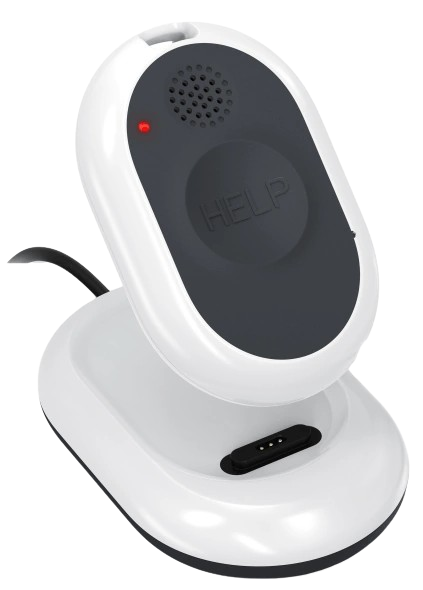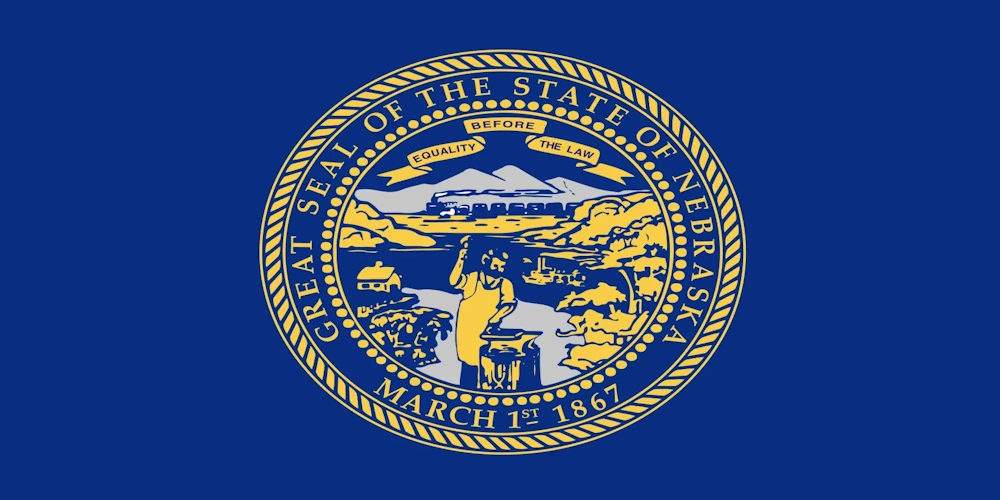As one of the largest and most economically diverse states in the U.S., Texas is home to industries like oil and gas, construction, agriculture, transportation, and healthcare—many of which rely heavily on lone workers. These employees often perform tasks in isolated environments where immediate supervision or assistance is not available. Whether it’s a technician inspecting a pipeline in West Texas or a delivery driver in Dallas, protecting lone workers is both a safety imperative and a legal responsibility.
Texas does not operate its own OSHA-approved occupational safety and health program. Instead, the state falls under the jurisdiction of federal OSHA (Occupational Safety and Health Administration) for private-sector workplaces. Public-sector workers in Texas are not covered by OSHA unless alternative protections are implemented by local or agency-specific policies.
On This Page
Our Guide To Lone Worker Safety Policy And Legislation In Texas
With no state-run occupational safety and health program, employers in Texas must comply with all applicable federal OSHA standards. Although OSHA does not currently have a regulation specifically labeled for lone workers, the General Duty Clause of the Occupational Safety and Health Act requires that all employers provide a workplace free from recognized hazards—including those associated with working alone.
Federal OSHA standards related to hazard communication, emergency preparedness, and fall protection often apply to situations where employees are working in isolation. Employers are expected to evaluate work conditions, identify potential hazards, and implement practical controls that reduce the risk to lone workers.
OSHA also offers consultation services and safety training programs that Texas businesses can use to build more robust lone worker policies.
How Texas Defines A Lone Worker
Texas law does not provide a specific definition of “lone worker.” However, in occupational safety contexts, a lone worker is generally understood to be someone who works without direct supervision or coworker presence for extended periods.
Examples of lone workers in Texas include:
- Oil and gas field technicians
- Utility line workers in rural or remote areas
- Home healthcare nurses and caregivers
- Agricultural employees working on large farms or ranches
- Truck drivers and delivery professionals
- Overnight security guards or janitorial staff
Because these workers may be exposed to environmental hazards, physical threats, or medical emergencies without help nearby, additional safeguards are essential.
Employing A Lone Worker In Texas
Employers in Texas must take proactive steps to evaluate and control risks associated with lone work, even in the absence of a state-specific regulation. Under OSHA’s general safety requirements, every workplace—including those with lone workers—must be assessed for potential hazards, and protective measures must be put in place.
Best practices for lone worker safety include:
- Conducting Thorough Risk Assessments: Identify the unique risks of each role and location.
- Implementing Reliable Communication Systems: Use mobile phones, radios, or lone worker safety apps to maintain regular contact.
- Establishing Emergency Response Plans: Ensure that lone workers know how to access help and what steps to take in urgent situations.
- Scheduling Check-Ins: Require manual or automated updates at set intervals to confirm the worker’s safety.
- Providing Proper Training: Educate employees on hazard recognition, emergency procedures, and use of safety tools.
In a state as vast and varied as Texas, these efforts help ensure workers remain protected—whether in rural fields or urban environments.
Learn How You Can Protect Your Employees With Loneworker.com

With Loneworker.com you can be equipped with the knowledge and the means to protect your employees and protect your business. Contact us today to learn more about how Loneworker.com can protect you and your employees.
How The Safe Lone Worker App Can Protect Texas Lone Workers And Employers
The Safe Lone Worker app helps Texas businesses safeguard employees who operate alone, especially in remote or high-risk settings. Key features such as GPS location tracking, scheduled check-ins, man-down alerts, and emergency SOS buttons allow employers to maintain oversight without being physically present.
This technology supports OSHA compliance, enhances emergency response times, and demonstrates a strong commitment to worker safety—an essential aspect of managing risk across Texas industries.
Whether your team operates in homes, on the road, or in remote industrial facilities, this app can strengthen your safety protocols and support OSHA compliance efforts.
Texas Lone Worker Policies
Texas does not operate its own state occupational safety and health plan, so federal OSHA standards apply to most private-sector workplaces statewide. While there is no lone worker-specific law, employers are legally obligated to assess workplace hazards and ensure adequate protections are in place for employees working alone.
Employers should consult the official OSHA website for updated regulations, training resources, and compliance tools. This content is provided as general guidance and should not be interpreted as legal advice or a substitute for formal regulatory consultation.
Texas Lone Worker Resources
OHS Contact Centre
- 1-866-415-8690
CDC / NIOSH
- 800-232-4636

Affordable Monitoring For Lone Workers In Texas

-
 Monitoring Your Employees' Safety
Monitoring Your Employees' Safety
-
 GPS Tracking And Monitoring
GPS Tracking And Monitoring
-
 Man Down Panic Alerts
Man Down Panic Alerts
-
 24/7 Protection Anywhere
24/7 Protection Anywhere
Lone Worker Legislation
Lone Worker Safety Policies And Legislation By State
-
 Alabama State Safety Policies And Legislation
Alabama State Safety Policies And Legislation
-
 Alaska State Safety Policies And Legislation
Alaska State Safety Policies And Legislation
-
 Arizona State Safety Policies And Legislation
Arizona State Safety Policies And Legislation
-
 Arkansas State Safety Policies And Legislation
Arkansas State Safety Policies And Legislation
-
 California State Safety Policies And Legislation
California State Safety Policies And Legislation
-
 Colorado State Safety Policies And Legislation
Colorado State Safety Policies And Legislation
-
 Connecticut State Safety Policies And Legislation
Connecticut State Safety Policies And Legislation
-
 Delaware State Safety Policies And Legislation
Delaware State Safety Policies And Legislation
-
 Florida State Safety Policies And Legislation
Florida State Safety Policies And Legislation
-
 Georgia State Safety Policies And Legislation
Georgia State Safety Policies And Legislation
-
 Hawaii State Safety Policies And Legislation
Hawaii State Safety Policies And Legislation
-
 Idaho State Safety Policies And Legislation
Idaho State Safety Policies And Legislation
-
 Illinois State Safety Policies And Legislation
Illinois State Safety Policies And Legislation
-
 Indiana State Safety Policies And Legislation
Indiana State Safety Policies And Legislation
-
 Iowa State Safety Policies And Legislation
Iowa State Safety Policies And Legislation
-
 Kansas State Safety Policies And Legislation
Kansas State Safety Policies And Legislation
-
 Kentucky State Safety Policies And Legislation
Kentucky State Safety Policies And Legislation
-
 Louisiana State Safety Policies And Legislation
Louisiana State Safety Policies And Legislation
-
 Maine State Safety Policies And Legislation
Maine State Safety Policies And Legislation
-
 Maryland State Safety Policies And Legislation
Maryland State Safety Policies And Legislation
-
 Massachusetts State Safety Policies And Legislation
Massachusetts State Safety Policies And Legislation
-
 Michigan State Safety Policies And Legislation
Michigan State Safety Policies And Legislation
-
 Minnesota State Safety Policies And Legislation
Minnesota State Safety Policies And Legislation
-
 Mississippi State Safety Policies And Legislation
Mississippi State Safety Policies And Legislation
-
 Missouri State Safety Policies And Legislation
Missouri State Safety Policies And Legislation
-
 Montana State Safety Policies And Legislation
Montana State Safety Policies And Legislation
-
 Nebraska State Safety Policies And Legislation
Nebraska State Safety Policies And Legislation
-
 Nevada State Safety Policies And Legislation
Nevada State Safety Policies And Legislation
-
 New Hampshire State Safety Policies And Legislation
New Hampshire State Safety Policies And Legislation
-
 New Jersey State Safety Policies And Legislation
New Jersey State Safety Policies And Legislation
-
 New Mexico State Safety Policies And Legislation
New Mexico State Safety Policies And Legislation
-
 New York State Safety Policies And Legislation
New York State Safety Policies And Legislation
-
 North Carolina State Safety Policies And Legislation
North Carolina State Safety Policies And Legislation
-
 North Dakota State Safety Policies And Legislation
North Dakota State Safety Policies And Legislation
-
 Ohio State Safety Policies And Legislation
Ohio State Safety Policies And Legislation
-
 Oklahoma State Safety Policies And Legislation
Oklahoma State Safety Policies And Legislation
-
 Oregon State Safety Policies And Legislation
Oregon State Safety Policies And Legislation
-
 Pennsylvania State Safety Policies And Legislation
Pennsylvania State Safety Policies And Legislation
-
 Rhode Island State Safety Policies And Legislation
Rhode Island State Safety Policies And Legislation
-
 South Carolina State Safety Policies And Legislation
South Carolina State Safety Policies And Legislation
-
 South Dakota State Safety Policies And Legislation
South Dakota State Safety Policies And Legislation
-
 Tennessee State Safety Policies And Legislation
Tennessee State Safety Policies And Legislation
-
 Texas State Safety Policies And Legislation
Texas State Safety Policies And Legislation
-
 Utah State Safety Policies And Legislation
Utah State Safety Policies And Legislation
-
 Vermont State Safety Policies And Legislation
Vermont State Safety Policies And Legislation
-
 Virginia State Safety Policies And Legislation
Virginia State Safety Policies And Legislation
-
 Washington State Safety Policies And Legislation
Washington State Safety Policies And Legislation
-
 West Virginia State Safety Policies And Legislation
West Virginia State Safety Policies And Legislation
-
 Wisconsin State Safety Policies And Legislation
Wisconsin State Safety Policies And Legislation
-
 Wyoming State Safety Policies And Legislation
Wyoming State Safety Policies And Legislation
-
 American Samoa State Safety Policies And Legislation
American Samoa State Safety Policies And Legislation
-
 Guam State Safety Policies And Legislation
Guam State Safety Policies And Legislation
-
 Northern Mariana Islands State Safety Policies And Legislation
Northern Mariana Islands State Safety Policies And Legislation
-
 Puerto Rico State Safety Policies And Legislation
Puerto Rico State Safety Policies And Legislation
-
 Washington D.C. State Safety Policies And Legislation
Washington D.C. State Safety Policies And Legislation
-
 Virgin Isles State Safety Policies And Legislation
Virgin Isles State Safety Policies And Legislation







